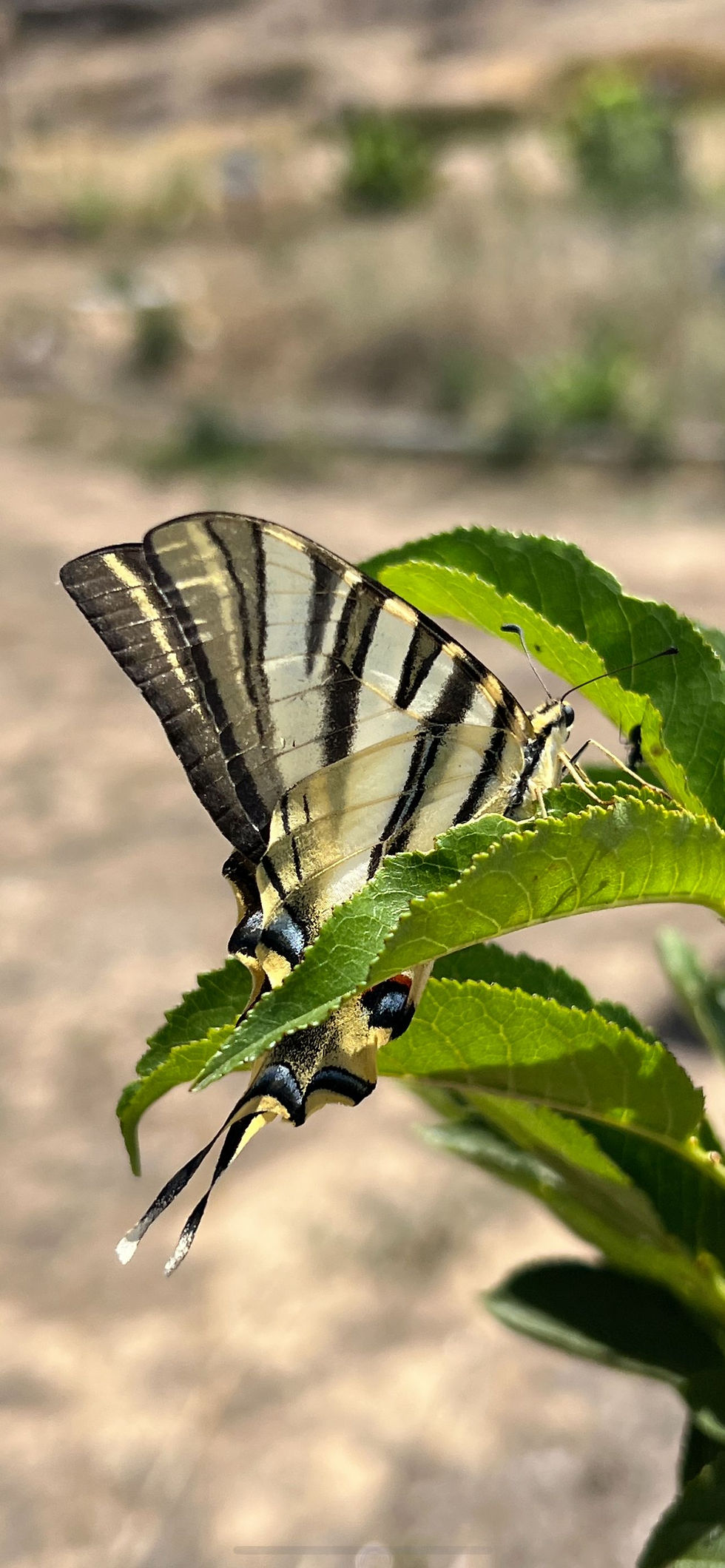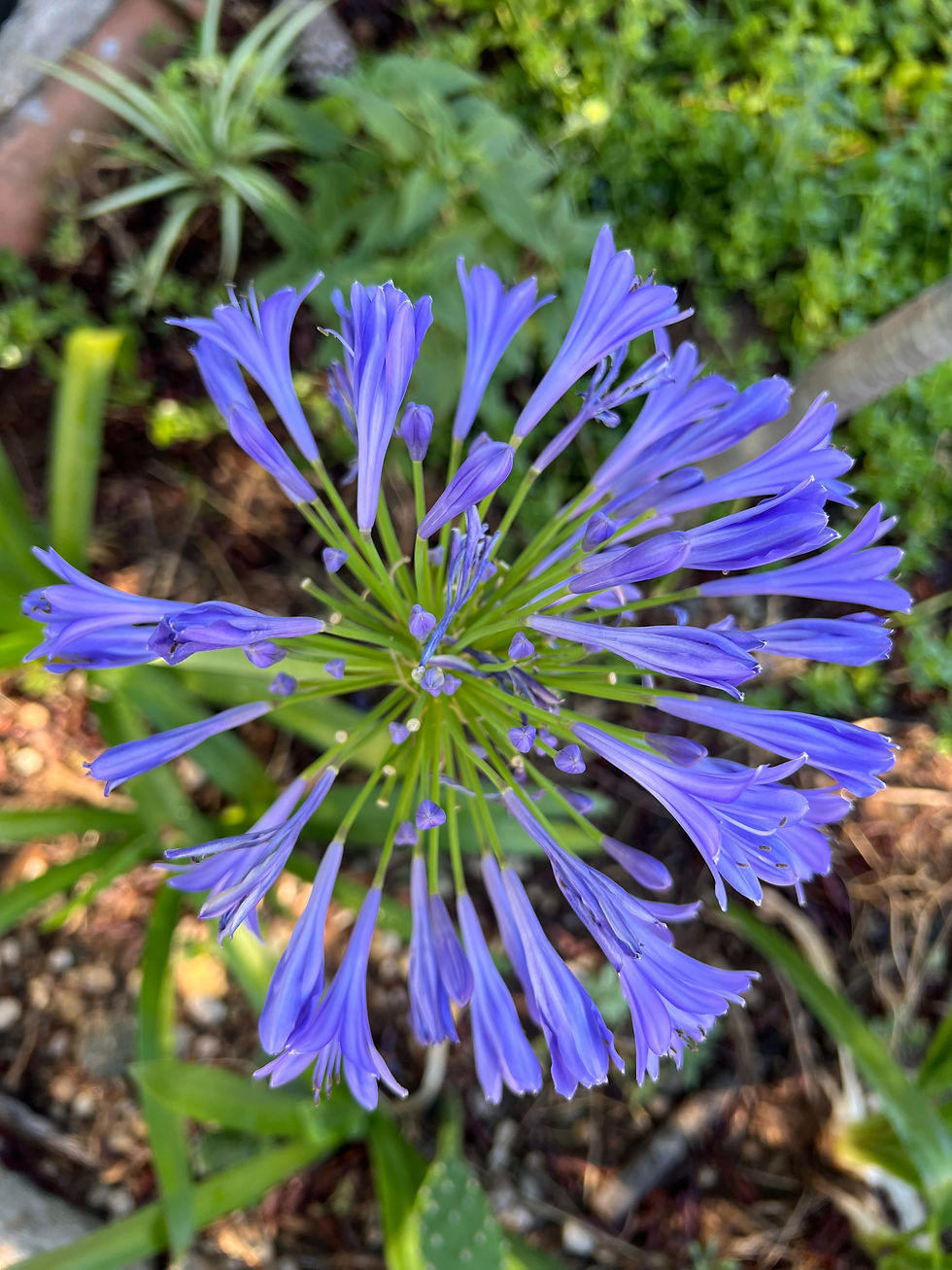From Wild to Wonderful: Underutilized Drought-Tolerant Plants for Biodiversity
- Herman Kraut

- Jul 17
- 8 min read
The future of our gardens might just lie in the wild.
Most people reach for the usual suspects when planting a drought-hardy garden — lavender, rosemary, maybe a few succulents. But beneath the radar, there’s a world of wild drought-tolerant plants doing remarkable work. Some fix nitrogen. Some feed bees when nothing else is flowering. Others survive on cracked soil, thriving where others wilt.
These plants aren’t just pretty — they’re resilient, useful, and often native to Mediterranean and semi-arid ecosystems. And yet… few gardeners know them. Even fewer grow them.

At Tough Kraut, we haven’t welcomed these species onto our land yet, but we’ve got our eyes on them — not just for their looks, but for their role in boosting biodiversity and ecological function. This post explores wild plants that deserve a place in more gardens — especially in dry, degraded, or water-limited landscapes.
Stick around to the end for Herman’s Tough Kraut Fixes, where we cover common questions and challenges about sourcing, integrating, and supporting wild species in your own garden.
Why Wild Plants Deserve a Place in Our Gardens
Drought is no longer a seasonal inconvenience. It’s the new normal for many parts of the world, including our corner of Central Portugal. As heatwaves intensify and water becomes scarce, we need plants that can do more with less — and not just survive, but thrive.
Wild plants — especially those adapted to dry, rocky, or disturbed habitats — often outperform cultivated ornamentals when it comes to water efficiency, soil building, and wildlife support. Yet they’re underrepresented in nurseries, gardening guides, and landscape designs.
In permaculture, we call this the edge effect: the richest potential often lives at the boundary between wild and cultivated. That’s where these plants come in. Whether it’s Phlomis attracting pollinators, Sideritis offering herbal benefits, or Coronilla fixing nitrogen for the soil, these species bring multifunctionality that aligns beautifully with regenerative design principles.
Adding just a few wild drought-tolerant species can:
Attract native pollinators and beneficial insects
Improve habitat diversity in compact gardens
Fill flowering gaps in your perennial calendar
Reduce irrigation needs with deep-rooted adaptation
Bring visual interest with unique textures and flower forms
We’ll spotlight eight lesser-known species — all adapted to Mediterranean-like climates — and explore how they contribute to a healthier, more diverse, and water-wise garden ecosystem.
Rare Native Gems: Wild Drought-Tolerant Plants Worth Knowing
Some of the most resilient and ecologically valuable plants are those that evolved under harsh conditions — rocky outcrops, limestone slopes, degraded soils. These Mediterranean natives aren’t just survivors; they are keystone players in local ecosystems.
Eryngium bourgatii (Mediterranean Sea Holly)
With its spiny blue bracts and sculptural form, Eryngium bourgatii adds drama to dry gardens. Native to mountainous areas of southern Europe, it thrives in well-drained soil with full sun and almost no summer irrigation once established. A magnet for pollinators, this sea holly bridges beauty and biodiversity.

Tough Tip: Great for gravel gardens or mixed dry borders. Its taproot makes it drought-proof, but it dislikes transplanting — sow direct if possible.
Bupleurum fruticosum (Shrubby Hare’s Ear)
An evergreen shrub with yellow umbels and glossy leaves, Bupleurum fruticosum quietly powers biodiversity. It flowers late, feeding bees and hoverflies when other plants fade. Its Mediterranean heritage means deep drought tolerance and excellent wind resistance.
Tough Tip: Use as an informal hedge or backdrop. Combine with aromatic herbs like rosemary to diversify pollinator options across seasons.
Coronilla valentina subsp. glauca (Scorpion Vetch)
Not just a nitrogen fixer — Coronilla is a graceful shrub with soft, fern-like foliage and clusters of pea-like yellow flowers. Its early blooms feed bees in late winter or early spring, and its roots stabilize dry, crumbling soil.
Tough Tip: Ideal for erosion control on sunny slopes or terraced walls. Avoid overwatering, it prefers neglect.
Wildflowers That Work Overtime
These may not show up in glossy catalogues, but they shine in harsh terrain. Their low stature and long flowering periods make them powerful ecological tools — without demanding much in return.
Erodium reichardii (Dwarf Stork’s Bill)
Tiny, tough, and totally charming. Erodium spreads as a low groundcover, producing pink or purple flowers over a long season. Native to rocky Mediterranean regions, it handles heat and poor soils like a champ.
Tough Tip: Use between stepping stones or as living mulch in herb spirals. It softens hardscapes while feeding native bees.
Ononis natrix (Large Yellow Restharrow)
This wild legume pops with lemon-yellow blooms and supports soil health by fixing nitrogen. It naturally colonizes dry meadows and degraded ground, making it perfect for wild garden edges or rewilding projects.
Tough Tip: Let it self-seed in difficult areas. It’s tough enough to break compacted soil with its roots.
Phlomis fruticosa (Jerusalem Sage)
You may recognize the fuzzy, grey-green leaves, but Phlomis earns more respect than it gets. It’s a structural, drought-tough shrub that attracts bees and holds form even in dry spells. The whorled yellow flowers add striking architecture.
Tough Tip: Cut back hard in late winter to encourage bushy regrowth. Try pairing with silver-leaved herbs or artemisia for contrast.
Ecological Benefits Beyond Beauty
A common thread among these wild species? They’re multitaskers. Whether it’s feeding beneficial insects, adding root depth to soil layers, or helping nearby plants survive — they do more than just sit pretty.
Pollinator Pathways: Wild plants often bloom when few cultivated plants do. Bupleurum and Coronilla, for instance, extend the nectar calendar.
Drought Insurance: Taproots, silvery foliage, and resinous leaves all help conserve water and fend off pests.
Soil Builders: Nitrogen-fixers like Ononis and Coronilla support polycultures and boost nearby plant health.
And because they evolved with local ecosystems, they’re often less prone to disease and more aligned with native wildlife needs.
Creating a Wild Biodiverse Bed at Home
You don’t need a meadow or massive land area to benefit from wild plants. Just a few square meters — even a raised bed — can host a micro-habitat that supports butterflies, bees, and soil microbes.
Here’s how to start:
Choose 3–5 wild species with staggered bloom times and complementary structures
Site selection: Full sun, low fertility, well-draining soil (gravelly or sandy preferred)
No fertilizer needed: These species evolved on lean soils — skip compost and irrigation after year one
Mix natives and exotics cautiously: Some plants (Artemisia, for instance) may outcompete neighbors if not managed
Artemisia arborescens or campestris (Wormwood / Sand Sage)
Feathery, fragrant, and functional. Artemisia thrives in nutrient-poor, bone-dry soils. It repels pests, stabilizes slopes, and brings striking grey-green color to low-maintenance borders.

Tough Tip: Best used as a background accent or dry hedge. Prune lightly to maintain shape and prevent woody overgrowth.
Let the Wild In
It’s easy to overlook the scrappy plants growing on rocky hillsides or forgotten field edges. But in a changing climate, these wild drought-tolerant plants might just be our best allies. They offer food for pollinators when cultivated species fall short. They fix nitrogen, stabilize slopes, and ask for little in return. And they remind us that beauty doesn’t have to be tamed to be appreciated.
Whether you’re working with a courtyard bed, a slope behind the shed, or a rewilded corner of your land, integrating even a few of these species can make a difference — for your garden’s health and for the ecosystem it’s part of.
We’re just beginning to explore these plants on our own homestead. Maybe this year we’ll trial Coronilla on the dry fence line. Maybe Eryngium will surprise us in the gravel patch. That’s the magic — we get to observe, learn, and adapt.
Ready to start your own wild patch? Scroll down and explore our curated Recommended Books & Resources to dig deeper.
Herman’s Tough Kraut Fixes: Common Wild Drought-Tolerant Plant Challenges
Even the toughest plants can raise questions — especially when they aren’t common nursery staples. If you’re new to growing wild drought-tolerant plants, you might hit a few speed bumps. This FAQ and troubleshooting guide covers some of the most common challenges we’ve seen gardeners face when incorporating lesser-known wild species into dryland gardens.
Let’s demystify the wild side.
Q: Where can I find seeds or starts for these wild species?
A: Many of these plants aren’t available at local garden centers. Look for specialist nurseries that focus on Mediterranean or native plants. European suppliers like Jelitto or Semillas Silvestres often carry species like Sideritis and Ononis. In the U.S., try Prairie Moon Nursery or Plant World Seeds (UK-based, ships internationally). Always check that your source is ethical and doesn’t harvest from wild populations.
Q: Are these plants invasive or aggressive in the garden?
A: Most wild drought-tolerant plants are well-behaved when given space and poor soil. Some, like Artemisia or Phlomis, can spread if left unchecked, especially in rich soil or irrigated beds. Prune after flowering and avoid overwatering. These species evolved to thrive with stress, don’t pamper them too much.
Q: Do I need to improve my soil before planting?
A: In most cases, no. These plants prefer low-nutrient, well-drained soil. Heavy clay? Mix in gravel or coarse sand. Avoid compost or fertilizer during establishment, it can lead to floppy growth or even plant death. This is one time when less really is more.
Q: Why aren’t my seeds germinating?
A: Some wild species need cold stratification (exposure to cold, moist conditions) to break dormancy. For example, Eryngium benefits from 4–6 weeks in the fridge before sowing. Others like Bupleurum need light to germinate — don’t bury them. Always check germination requirements before sowing.
Q: How do I design with plants I’ve never seen in person?
A: Start small. Choose 2–3 species that meet your site’s sun and soil conditions. Look for photos in reputable Mediterranean garden books (see below), or visit public xeriscape gardens if available. You don’t need a full master plan. Observe how the plants grow and let your design evolve naturally.
Got another question? Drop us a comment or join the Kraut Crew to share your wild garden wins and experiments.
Recommended Books & Resources
Planting in a Post-Wild World by Thomas Rainer & Claudia West
A modern classic on ecological planting design. This book bridges ornamental gardening and ecological restoration, showing how to use native and wild-adapted plants to build layered, resilient landscapes. Great for those wanting to move beyond lawns and embrace a wild aesthetic with structure.
The Garden Awakening: Designs to Nurture the Land and Ourselves by Mary Reynolds
Mary Reynolds weaves permaculture, forest gardening, and ecological storytelling into a powerful call for reconnecting with wildlife‑friendly soils and plants. A richly illustrated guide rooted in resilience and biodiversity.
The Drought-Defying California Garden by Greg Rubin and Lucy Warren
A practical field manual full of planting combinations and watering strategies. While California-based, it parallels Mediterranean climates and features many wild species adapted to arid conditions. Very beginner-friendly.
Eryngium & Bupleurum Seeds – from Jelitto or Sheffield’s Seeds
Hard-to-find seeds for lesser-known drought stars like Eryngium bourgatii or Bupleurum fruticosum, from trusted specialty seedhouses.
Tough Kraut Resources — Our handpicked collection of essential tools, books, pantry picks, and composting gear to build resilience from soil to shelf.



Comments